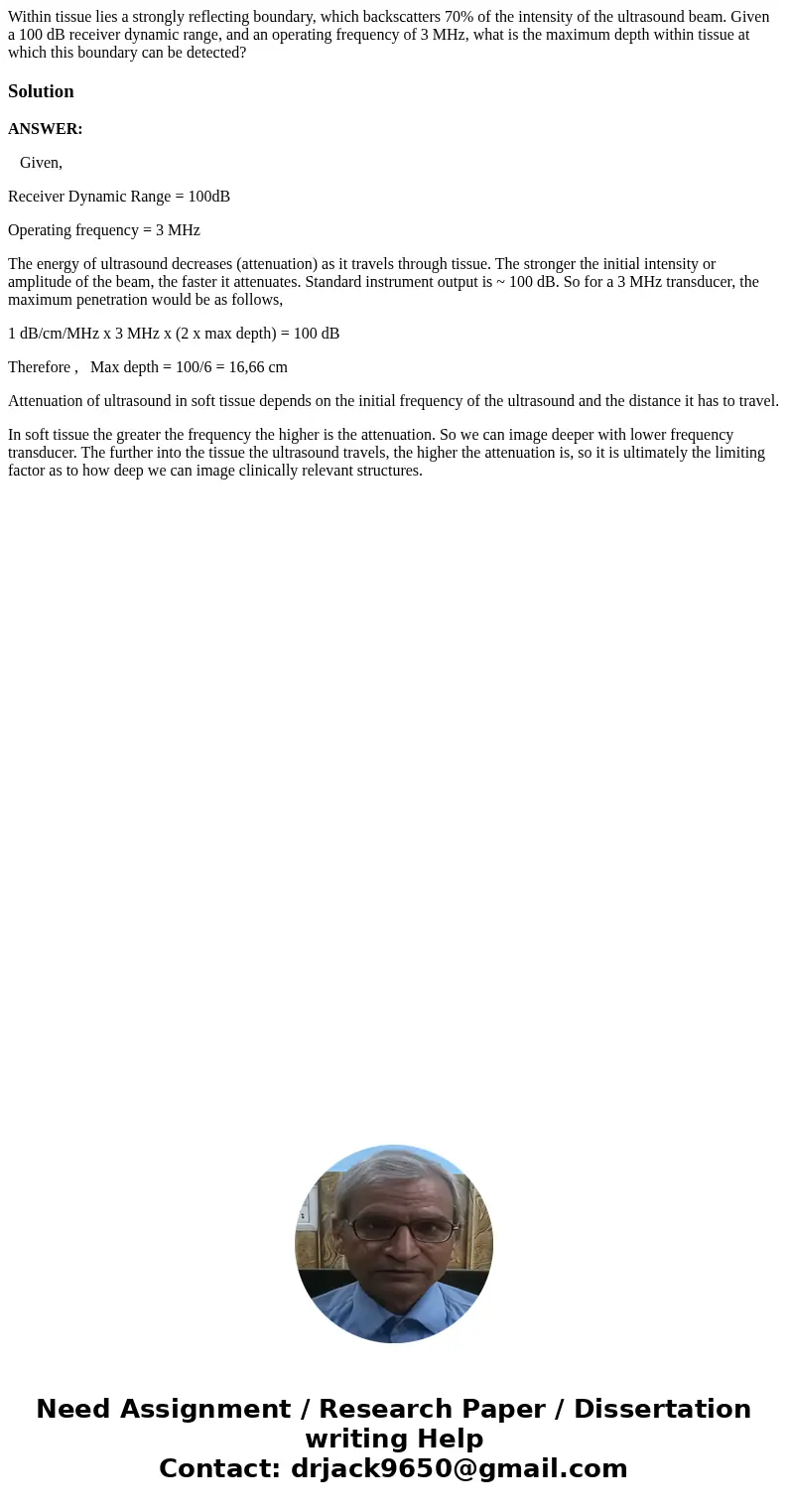Within tissue lies a strongly reflecting boundary which back
Solution
ANSWER:
Given,
Receiver Dynamic Range = 100dB
Operating frequency = 3 MHz
The energy of ultrasound decreases (attenuation) as it travels through tissue. The stronger the initial intensity or amplitude of the beam, the faster it attenuates. Standard instrument output is ~ 100 dB. So for a 3 MHz transducer, the maximum penetration would be as follows,
1 dB/cm/MHz x 3 MHz x (2 x max depth) = 100 dB
Therefore , Max depth = 100/6 = 16,66 cm
Attenuation of ultrasound in soft tissue depends on the initial frequency of the ultrasound and the distance it has to travel.
In soft tissue the greater the frequency the higher is the attenuation. So we can image deeper with lower frequency transducer. The further into the tissue the ultrasound travels, the higher the attenuation is, so it is ultimately the limiting factor as to how deep we can image clinically relevant structures.

 Homework Sourse
Homework Sourse